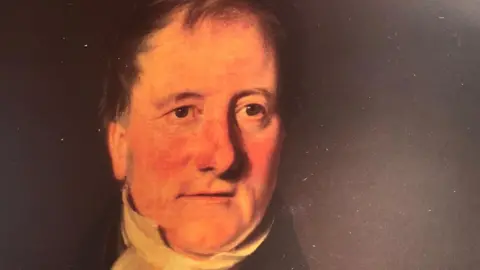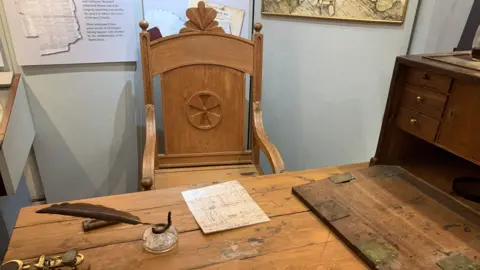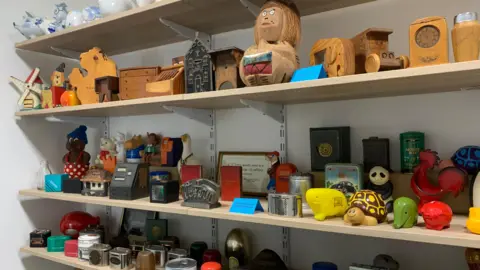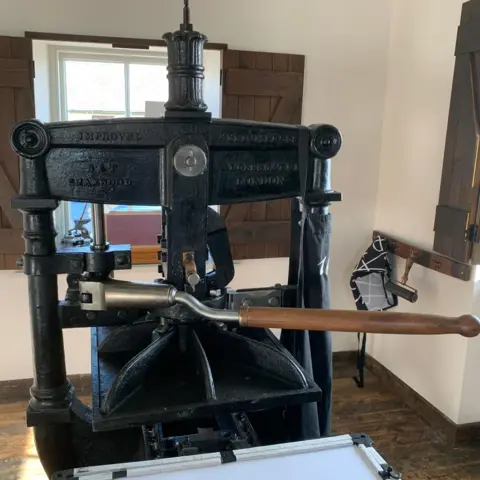The little museum that refused to close for good
 BBC
BBCA small visitor attraction in the village of Ruthwell in the south of Scotland has been open again this summer for the first time in five years.
The pandemic and then plans to transfer its most precious contents to Edinburgh risked closing the doors at the Savings Bank Museum for good.
Instead, the converted cottage which celebrates the story of Rev Henry Duncan has opened again, with plans to expand its offering.
It has been quite a journey for the building and its long-time manager Mhairi Hastings.

The museum is on the site of the world's first savings bank, set up by Duncan as a "penny bank" for parishioners.
"The bank here opened in 1810, and it survived all the way up until 1875 using this room," said Mhairi.
"But it was also a Sunday school, a meeting hall, you could hire it for weddings, funerals - it was a society room.
"So when the bank finally closed in 1875 - because really there was never a population in Ruthwell to sustain a bank - the building was sealed and again it was left empty."
It was sold in the 1950s to the TSB. In the 1970s, the museum was created and operated for more than 40 years.
The last summer it was open, however, was in 2019 - but then it was shut by the global pandemic.
"When lockdown happened, of course we closed - as did all visitor attractions," explained Mhairi.
"And then, when we were due to reopen, that's when the TSB made the decision to not have a museum any more."

It was May 2021 that the bank revealed plans to permanently close the museum and transfer its contents to Henry Duncan House in Edinburgh.
That prompted local outcry. A campaign quickly convinced the TSB to announce it would transfer the property to the community.
It was not until August last year, however, that it was confirmed it could reopen after being taken over by the nearby Comlongon Estate.
Estate owners Prof David Thomson and Teresa Church said the museum was one of the most important historical sites in Dumfries and Galloway.

Mhairi said their intervention meant the story had come full circle as the building originally belonged to the Earl of Mansfield - whose local seat was Comlongon - who donated it to the village.
"It was absolutely amazing, especially because it was done for the right reasons," she said.
"David and Theresa were aware of Henry Duncan and the museum, so that's why they got involved.
"They just love the story and they want everybody to know more about Henry Duncan.
"So it was done to make sure that Henry's name is kept alive and that the museum continues to tell his story and expand as well."

The site reopened in March and despite a "soft opening" visitor numbers have returned to pre-Covid levels.
Among the attractions on offer are an ever-growing piggy bank collection showing how people used to keep their savings down the years.
Visitors can also strike their own coin, see a display of currency notes and try to crack a safe.
A printing press - a nod to Duncan's role in founding local newspapers - also allows them to make their own bookmark.

Tours normally take 45 minutes but Mhairi said that as they expanded their offering they were taking longer.
"We need to make it worth people's while if they're going to come off the beaten track to find the museum," she said.
"It is difficult because as you see, we're in the middle of nowhere but this is where Henry was, so this is where the museum has to be."
And now they are hoping it can stay there for some time to come.
